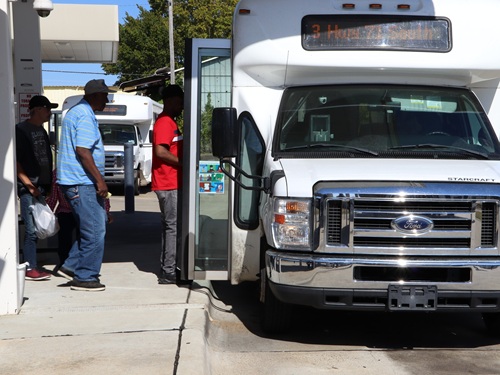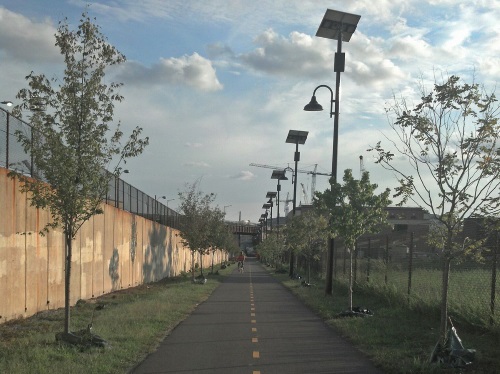The District Department of Transportation recently helped open the latest section of the Metropolitan Branch Trail or MBT (seen above); a section that closes a gap in Washington, D.C.’s pedestrian and bicycle network and that represents a key milestone in the goal to complete the nearly 900-mile regional trail network.
[Above photo via Wikipedia]
The new trail section connects the Fort Totten and Brookland Metro subway stations while also providing North-South bicycle and pedestrian connectivity for Catholic University, Lamond Riggs, Queens Chapel, Manor Park, and other surrounding neighborhoods.
That new trail section – which cost $12.9 million to design and build – features light emitting diode or LED lighting, storm water management facilities, wayfinding signage, and security cameras.

“This project was located in a very challenging work environment and took a lot of collaboration with multiple stakeholders,” said District DOT Director Everett Lott in a statement.
“Through our team’s vigilance and dedication, and the mayor’s continued support, we are ecstatic to celebrate this key milestone and increase trails users’ safety by separating them from vehicle traffic, advancing our Vision Zero goal,” he noted.
The MBT is a major commuter route for residents and regularly sees more than 1,500 users per day. For the MBT’s Brookland to Fort Totten segment, District DOT collaborated with Washington Metropolitan Area Transit Authority and National Park Service to develop real-estate agreements to allow construction of MBT sections upon their respective properties.
The MBT follows the former Metropolitan Branch of the B&O Rail line as a multi-use trail, roughly parallel to the Metro Red Line. The project fits into a larger plan to take the MBT all the way to Silver Spring, Maryland, and will connect to the Capital Crescent Trail. When fully complete, the eight-mile trail will go from Silver Spring, MD, to Union Station in Washington, D.C.
Currently, 62 miles of the MBT traverses Washington, D.C., with plans to build 17 more miles in the next six years via the city’s current Capital Improvement Program. The District DOT is currently working to finalize design plans for the next section of the trail between Fort Totten to Takoma, with plans to begin construction in 2023.
 States
States
Nick Donohue Appointed Virginia’s Secretary of Transportation
December 12, 2025 States
States

